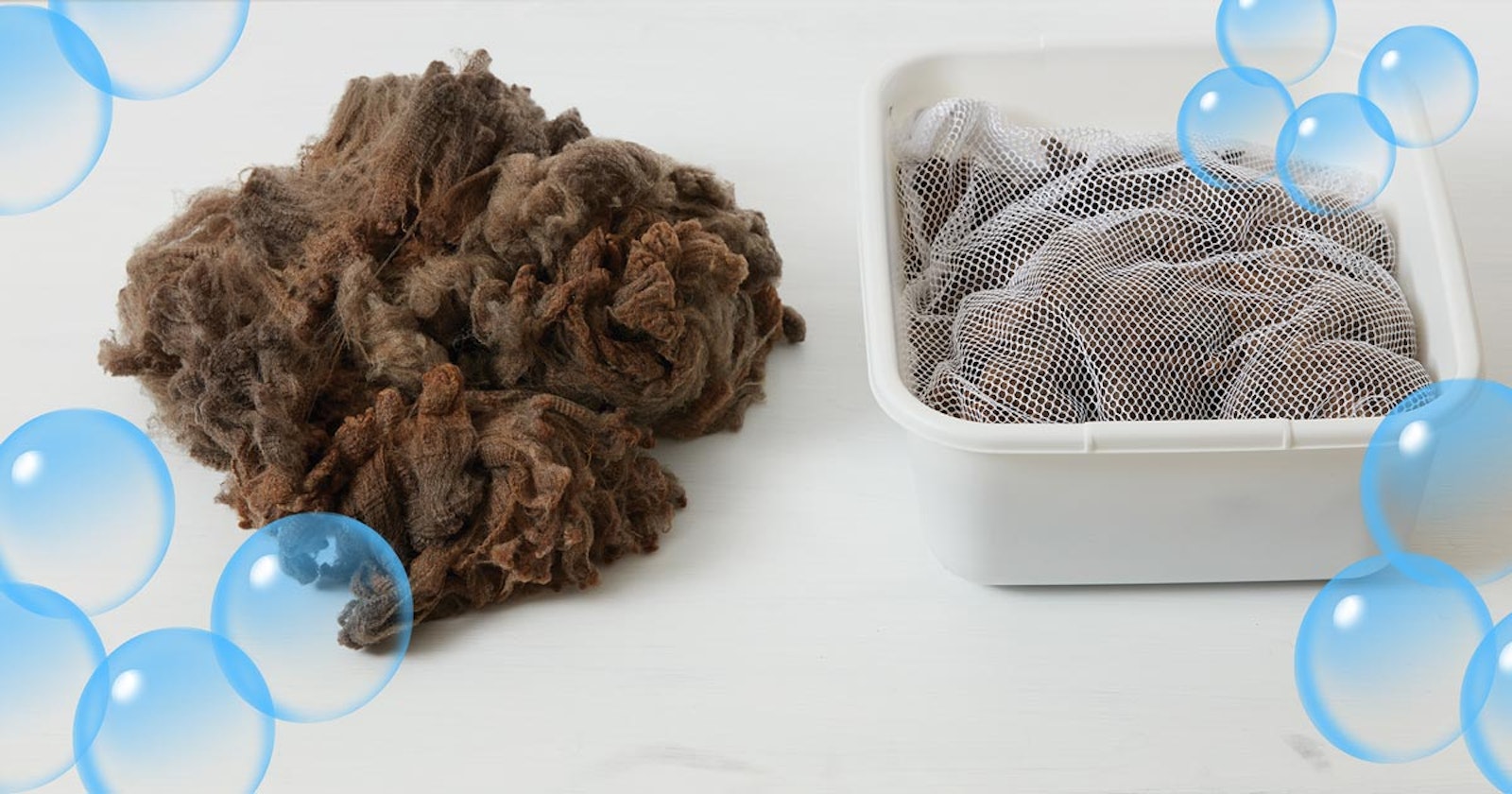Confession time: personally, I hate washing wool. I loved my first spinning class (with Maggie Casey!), and I loved spinning handcarded rolags, but the part about washing fleece 2 times in soapy water and rinsing it 2 times wasn’t my favorite. (I don’t like cooking and I don’t wash dishes by hand, either, so this may just be me.)
Still, I bought part of a beautiful 13-micron Merino fleece, 2 years’ growth on a ram that hadn’t always been coated. It was too fine to send to a mill, and I wanted to try Margaret Stove’s method of washing lock by lock. But after my usual 2-wash, 2-rinse washing session, the locks were still a little tacky, so I got out the good old blue Dawn and washed them again—clean, bright, and silky.
The next time I washed some of that fleece, I’d learned my lesson. I got out the blue stuff and turned up the water heater for good measure. But that batch didn’t go any better. I had to rewash that one, too, this time with another serious detergent. On subsequent batches I tried several old favorites, but no matter what, I needed 2 complete rounds of washing to get any batch clean.
For years, the mystery of the double-washed fleece troubled me, until Kate Larson explained it one day in a completely unrelated class. Kate mentioned that not all wool grease is created the same, and some detergents are more effective on some varieties. My very fine fleece was very greasy indeed, and apparently it was too much for any one of the detergents I’d tried.
More advice from the pros on washing wool:

With practice you can spot fleeces, such as this Border Leicester fleece, that will scour easily and spin like a dream. Photos by Kate Larson
Consider the type of fleece:
Adapting my wool-washing routine for different types of fleece has become a fascinating creative pursuit all on its own. There are so many elements that come into play:
- Fleece type: is it a soft finewool or a lustrous longwool?
- What’s being removed: is it a dry, sticky fleece or an oily, greasy fleece?
- Water temperature: how hot for finewool vs. longwool?
- Water type: hard or soft? (There are different types of water hardnesses.)
- Detergent class: in what type of water is my detergent efficacious?
You can make a detailed study of all of these factors and how they interact if that makes you happy. Or you can just play and keep notes. I’ve found that using more than one detergent is a great way to work on all the different lipids found in various fleeces. However, sometimes you might find the perfect detergent for your water and fleece; 1 detergent might be all you need!
I like washing wool fleeces 1 or 2 pounds at a time, with 2 washes using different detergents followed by 2 rinses. For my Border Leicester fleeces, I like a water temperature of 140 degrees F and Ecos Laundry Detergent and blue Dawn.
—Kate Larson, Editor of Spin Off
Kate’s online course Finishing Up discusses all kinds of washing, drying, and other yarn-finishing techniques.
Elizabeth’s cat loved to join her washing wool. Photo by Elizabeth Prose
Taking space into consideration:
Years ago when I had more space, I washed my fiber one fleece at a time—assembly-line style in my basement. I lined up plastic tubs, filled them with the hottest tap water and Orvus Paste, and ran the lingerie-bagged wool through 2 to 3 washes and 2 rinses. The clean fiber was dried on stackable drying screens on the sun porch safe from everything except my cat, who loved to sleep under the wet wool. Now that I've downsized and have limited space, I plan on trying Margaret Stove's method for washing locks. I have a bag of greasy Cormo set aside that would be perfect for this technique.
—Elizabeth Prose, former Associate Editor, Spin Off
Anne Merrow is the Co-Founder and Editorial Director of Long Thread Media.
Originally published April 26, 2019.


